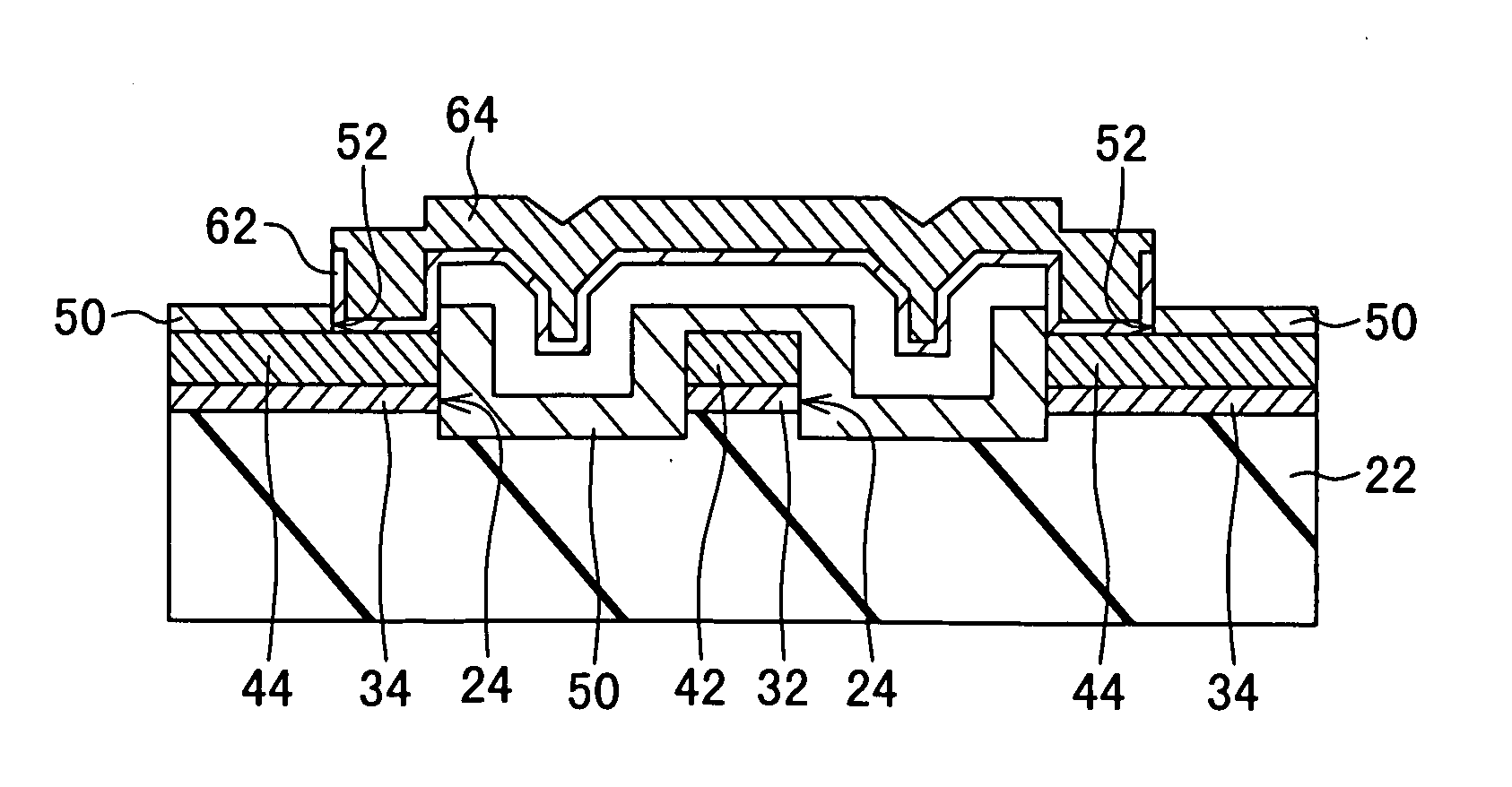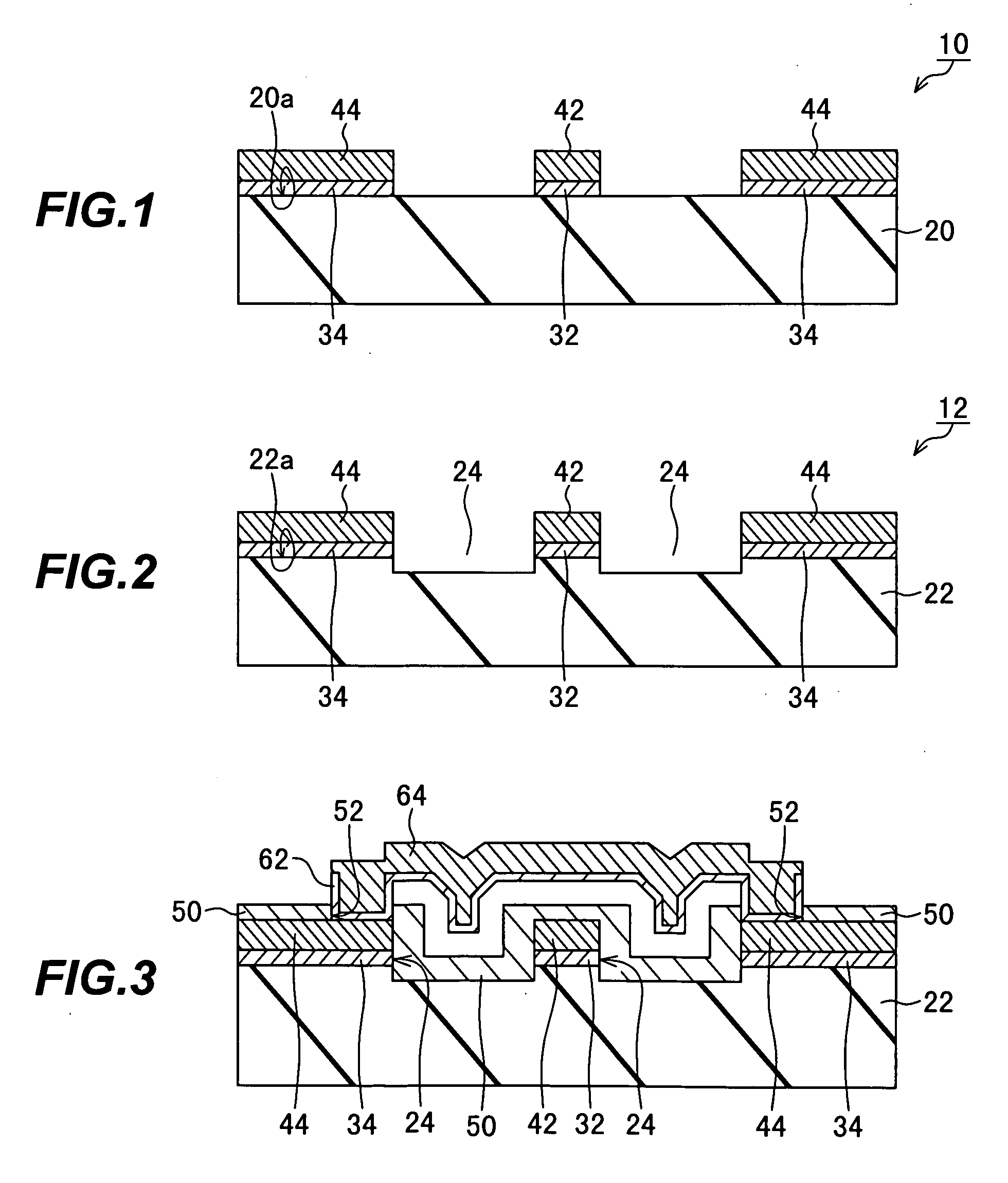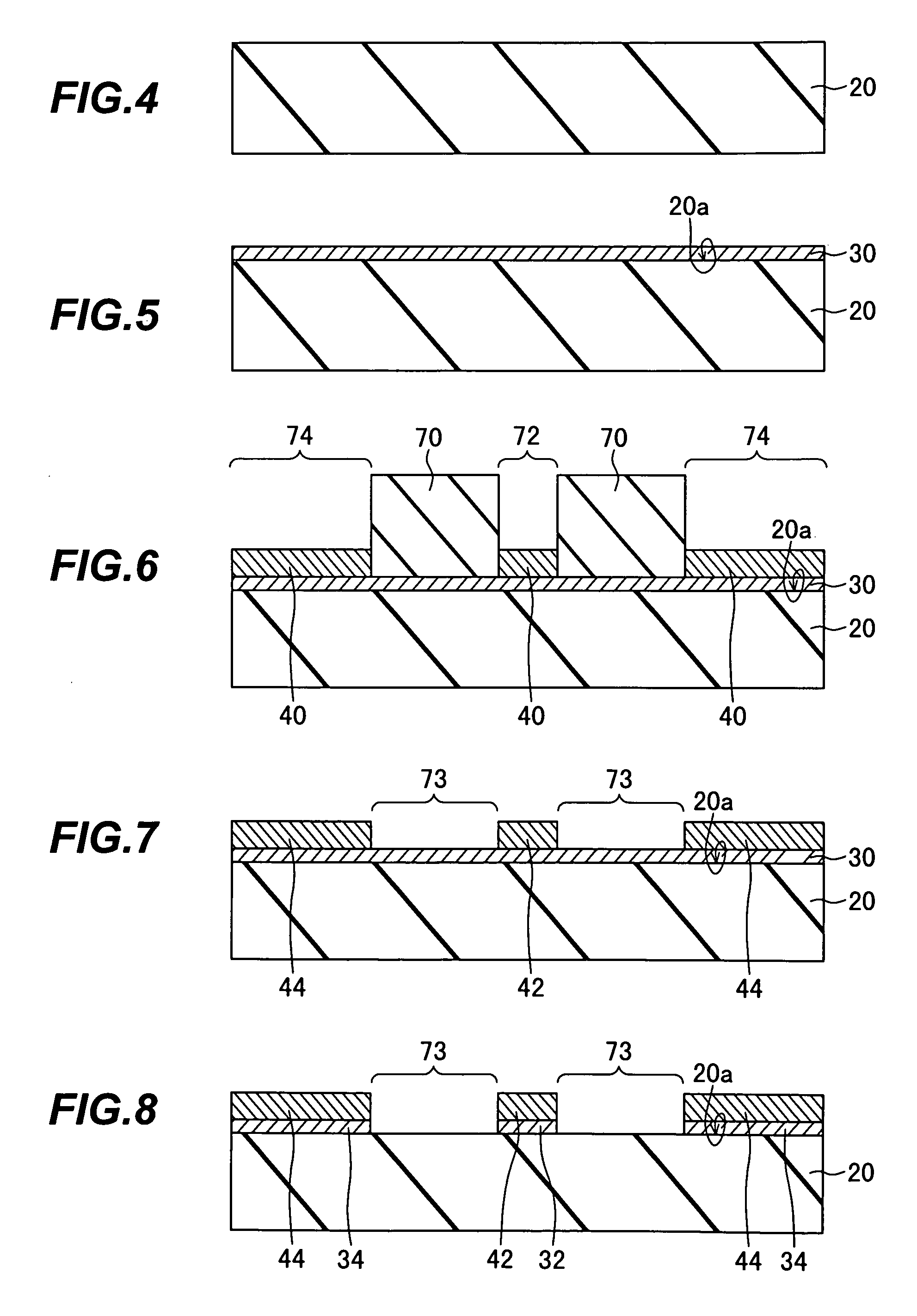Coplaner waveguide and fabrication method thereof
a technology of waveguide and fabrication method, which is applied in the direction of optical elements, instruments, optics, etc., can solve the problems of small size high cost of monocrystalline compound semiconductor substrate, etc., to achieve the effect of cheap and easy fabrication of coplanar waveguides
- Summary
- Abstract
- Description
- Claims
- Application Information
AI Technical Summary
Benefits of technology
Problems solved by technology
Method used
Image
Examples
Embodiment Construction
[0031]The invention will now be described in more detail with reference to the attached non-limiting drawings, in which like elements are indicated by like reference characters. Reference characters 20 and 22 will be used to denote flat and trenched substrates, respectively.
[0032]Referring to FIG. 1, a first coplanar waveguide 10 embodying the invention comprises a flat substrate 20, a signal line 42 formed on the substrate 20, and a pair of ground conductors 44 disposed on mutually opposite sides of the signal line 42. The signal line 42 and ground conductors 44 are insulated from the substrate 20 by insulating films formed on a major surface 20a of the substrate 20. The insulating film interposed between the substrate 20 and the signal line 42 is referred to as the signal line insulating film 32; the insulating film interposed between the substrate 20 and the ground conductors 44 is separate from the signal line insulating film 32 and is referred to as the ground conductor insulat...
PUM
 Login to View More
Login to View More Abstract
Description
Claims
Application Information
 Login to View More
Login to View More - R&D
- Intellectual Property
- Life Sciences
- Materials
- Tech Scout
- Unparalleled Data Quality
- Higher Quality Content
- 60% Fewer Hallucinations
Browse by: Latest US Patents, China's latest patents, Technical Efficacy Thesaurus, Application Domain, Technology Topic, Popular Technical Reports.
© 2025 PatSnap. All rights reserved.Legal|Privacy policy|Modern Slavery Act Transparency Statement|Sitemap|About US| Contact US: help@patsnap.com



